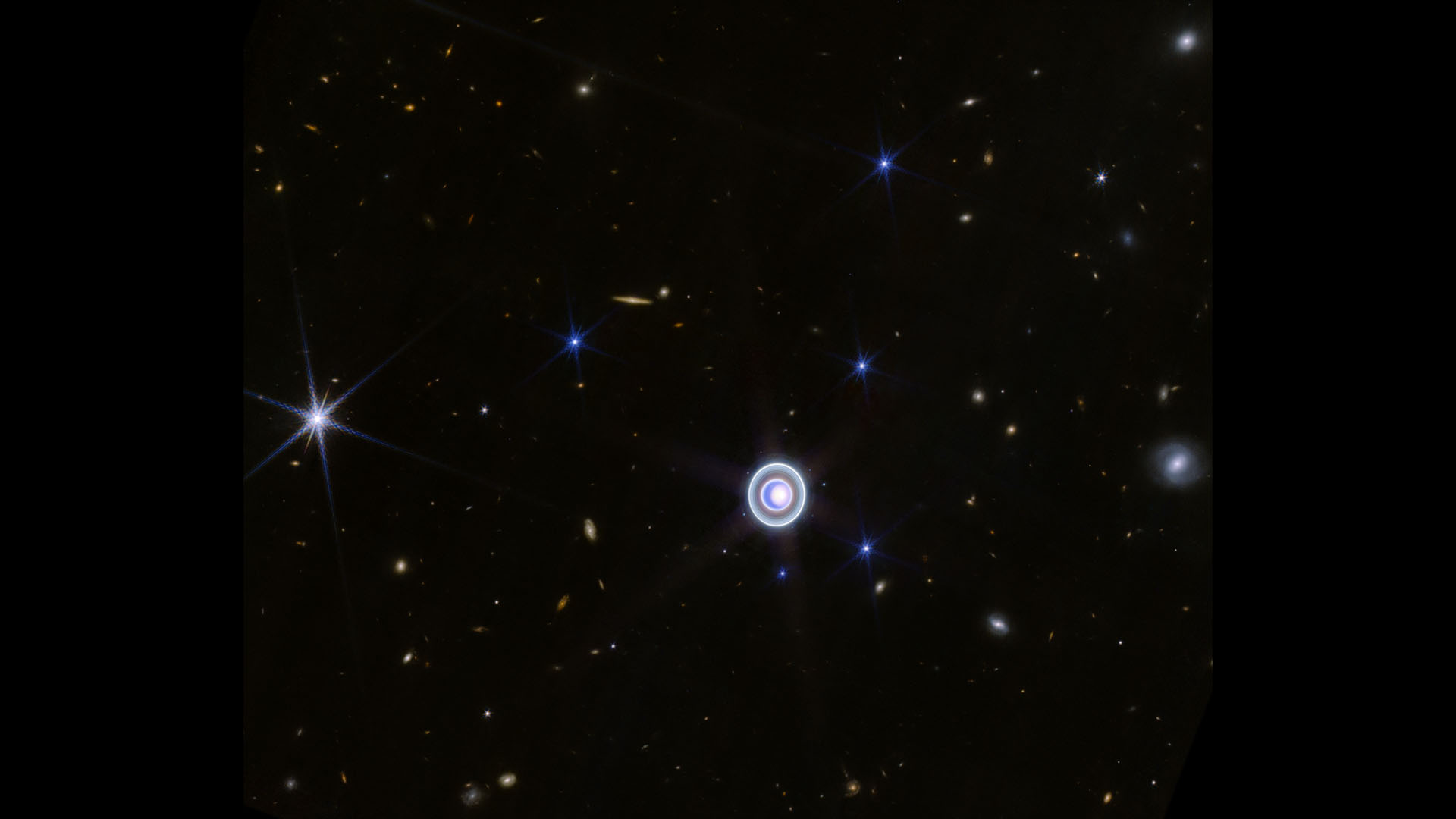Space photo of the week: Uranus 'rings' in the New Year in stunning James Webb telescope image
The James Webb Space Telescope reveals a stunning new portrait of ice giant Uranus, featuring its frigid rings and 14 of 27 moons.

What it is: Uranus and 14 of its 27 moons
When it was taken: Dec. 18, 2023
Where it is: 1.8 billion miles (2.9 billion kilometers) from the sun
Why it's so special: This photo of Uranus, captured by the James Webb Space Telescope, reveals the ice giant planet in exquisite detail. The wide-field image shows Uranus' rings, a polar ice cap, 14 of the planet's 27 moons, background stars and galaxies.
The close-up image, snapped by JWST's Near Infrared Camera and released by NASA this week, is a follow-up to a set of photos taken in February. The new image features an extra wavelength of light, revealing a hidden ring. Although Uranus is known to have 13 distinct inner and outer rings, NIRCam revealed the planet's elusive "Zeta ring," a faint, diffuse ring nestled close to the planet.
Of Uranus' 27 moons, 14 are featured in this image: Oberon, Titania, Umbriel, Juliet, Perdita, Rosalind, Puck, Belinda, Desdemona, Cressida, Ariel, Miranda, Bianca and Portia.
It's a much more detailed view of Uranus than humankind's first close-up of the seventh planet, taken by NASA's Voyager 2 probe in 1986. That featureless image showed a solid bluish orb with no detail. JWST, by contrast, has captured atmospheric features such as a north polar cloud cap. That growing and receding cap is fascinating to planetary scientists because it's visible evidence that Uranus spins on an axis tilted by 98 degrees, producing seasonal and meteorological effects that create storms.
Get the world’s most fascinating discoveries delivered straight to your inbox.
Uranus takes 84 Earth years to orbit the sun once. That slow orbit, plus the extreme tilt of Uranus, means the ice giant experiences extreme seasons, with the polar cap visible in the image resulting from its north polar region being in the depths of a 21 Earth-year-long winter that will end in 2028.
Dozens of background galaxies are visible in this wide-field image. Most have an orange tint, but if you look to the right of Uranus, you'll see two sizable white spiral galaxies.
In October, scientists at the University of Leicester in the U.K. published a paper in the journal Nature Astronomy revealing the presence of infrared aurorae around Uranus.
In April 2022, a Decadal Survey report by the National Academy of Sciences recommended that NASA probe the atmosphere, clouds and storms of the turquoise planet as part of the Uranus Orbiter and Probe Flagship mission.

Jamie Carter is a freelance journalist and regular Live Science contributor based in Cardiff, U.K. He is the author of A Stargazing Program For Beginners and lectures on astronomy and the natural world. Jamie regularly writes for Space.com, TechRadar.com, Forbes Science, BBC Wildlife magazine and Scientific American, and many others. He edits WhenIsTheNextEclipse.com.
 Live Science Plus
Live Science Plus





